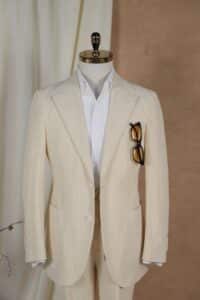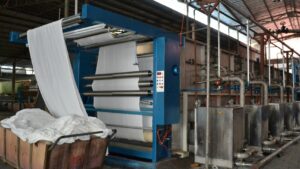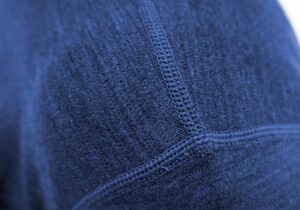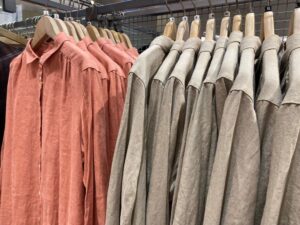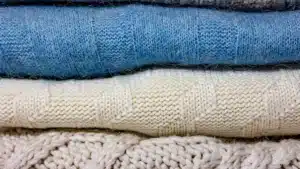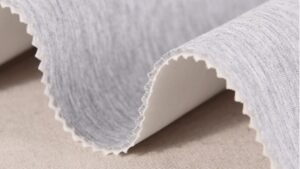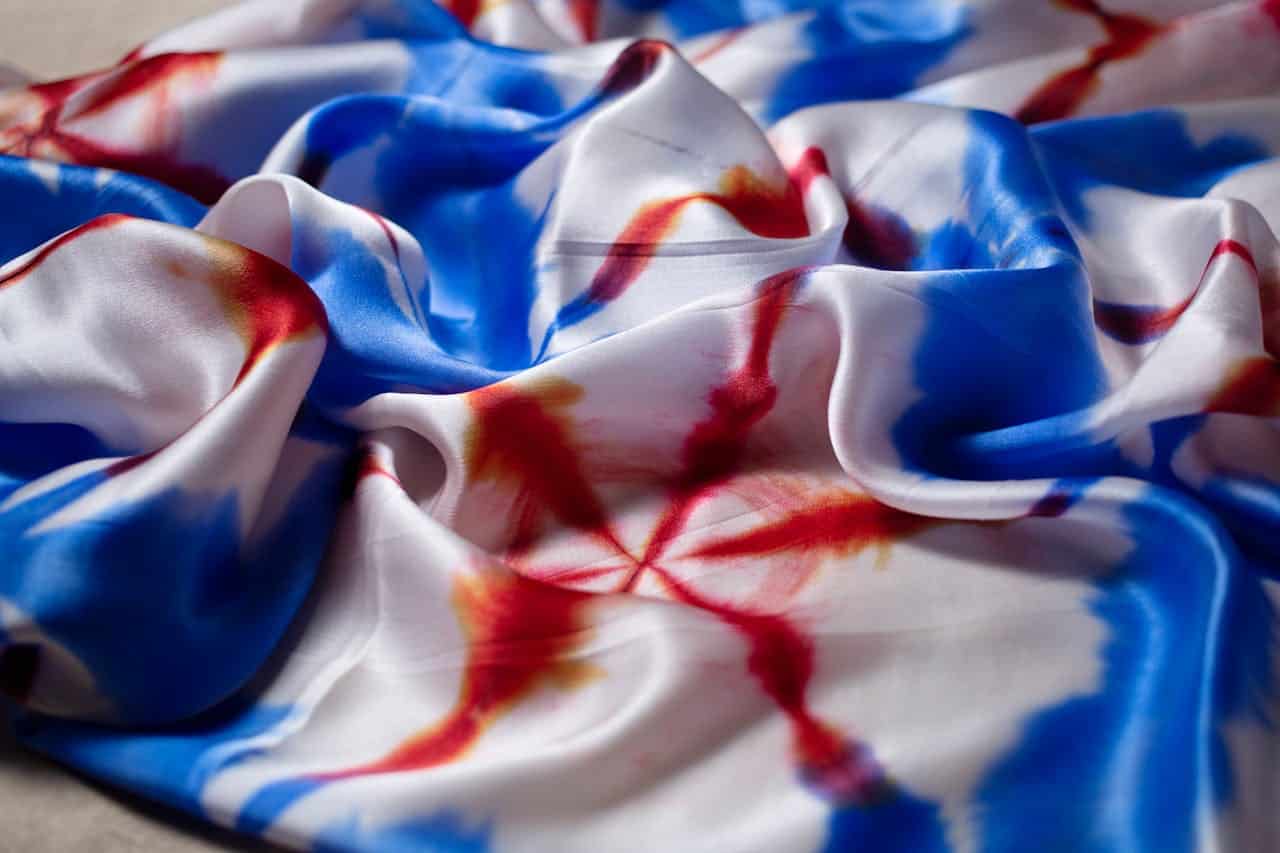
Satin fabric is known for its shiny, smooth front and dull back. It is made using a special satin weave, giving it a fancy look. Its soft feel and shiny surface make it popular for fancy clothes like lingerie and evening dresses. Satin is not a type of fiber but a way of weaving. It can be made from silk, polyester, or nylon. Satin looks stylish and can be used in clothing or home decor. This fabric adds beauty and charm to any design.
Key Takeaways
Satin fabric has a shiny front and a dull back. This makes it great for fancy clothes and home decorations.
Satin is flexible and used for dresses, lingerie, bedding, and curtains.
There are different kinds of satin, like silk or polyester. Each type has special features for comfort or cost.
To keep satin nice, wash it gently and store it carefully.
Satin looks and feels fancy, so it’s perfect for weddings and formal events.
Characteristics of Satin Fabric
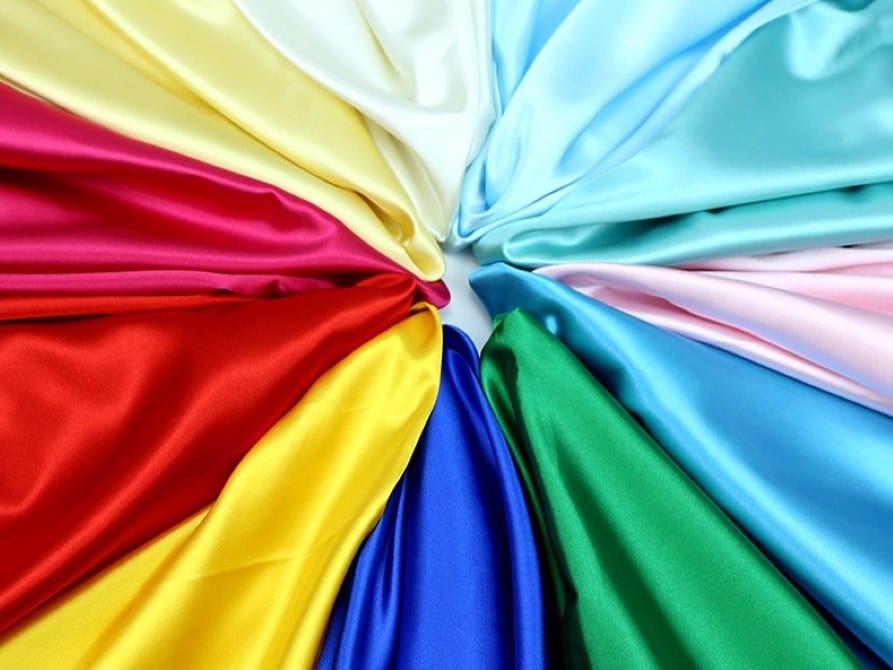
Smooth and Shiny Surface
Satin fabric is known for being smooth and shiny. This comes from its special weave, which creates a glossy front and dull back. The way it is woven helps it reflect light, making it look bright and radiant. Satin has been shiny and smooth for centuries, from ancient China to today. People long ago perfected this weaving method, and its shine is still unmatched.
The soft and smooth feel of satin makes it great for fancy clothes like wedding dresses and evening gowns. It feels nice on the skin, adding to its rich and elegant look. Whether used in clothing or home decor, satin's shiny surface makes any design look more stylish.
Elegant Drape and Soft Feel
Satin is loved for how it flows and feels soft. Its smooth drape makes it perfect for creating beautiful clothing shapes. Dresses, gowns, and lingerie look better because of satin's graceful flow. The soft threads in satin make it comfortable to wear and touch.
Research shows satin is linked to luxury, scoring 4.02 in fabric surveys. Its shiny look, soft feel, and flowing style make it seem fancy. Satin's smooth drape fits the body nicely, making it a favorite for designers and fashion lovers.
Many Uses
Satin is popular because it can be used in many ways. In fashion, it’s used for gowns, ties, and formal outfits because it drapes so well. For home decor, satin is common for bedding and curtains.
Satin isn’t just pretty; it’s useful too. Its weave works for things like filters and conveyor belts. Satin is also used in handbags, ribbons, and shoes because of its smooth and shiny look.
Whether for fashion or practical uses, satin offers many options. Its mix of beauty and usefulness makes it a classic choice.
Distinction from other fabrics like silk and polyester
Satin is different from silk and polyester in texture and feel. Its special weave gives it a shiny front and soft texture. While silk and polyester may look similar, they have key differences.
Texture and Appearance:
Satin has a shiny front and dull back, making it great for fancy designs. Silk is natural and shiny on both sides but lacks satin's dual finish. Polyester can copy satin's shine but feels less soft and more stiff.Breathability:
Satin made from natural fibers like silk or cotton lets air flow easily. This makes it comfy for clothes and bedding. Silk is also breathable, perfect for luxury sleepwear. Polyester satin traps heat and isn’t as good for warm weather or sensitive skin.Suitability for Sensitive Skin:
Satin from natural fibers is gentle on sensitive skin. It’s hypoallergenic and soothing. Silk is also skin-friendly and soft. Polyester, being synthetic, can irritate skin and isn’t as comfortable.
Feature | Satin Fabric | Silk | Polyester |
|---|---|---|---|
Texture | Shiny front, dull back | Shiny both sides | Shiny but stiff |
Breathability | High (natural fibers) | High | Low |
Skin-Friendliness | Hypoallergenic (natural satin) | Hypoallergenic | May irritate skin |
Knowing how satin differs from silk helps you pick the right fabric. Satin combines the elegance of silk with the affordability of polyester, making it a popular choice for fashion and decor.
How Satin Fabric is Made
The Satin Weave Technique
The satin weave gives satin its shiny and smooth look. This method involves layering threads to create a glossy top and dull back. Unlike plain weaves, satin uses longer thread floats to reflect light.
There are different types of satin weaves, each with unique traits:
4 harness satin weave: The thread goes over three and under one. This makes the fabric stretchy.
5 harness satin weave: Similar to the 4 harness but floats over four threads.
8 harness satin weave: The most flexible, floating over seven threads and under one.
Characteristic/Variation | Description |
|---|---|
Satin Weave Definition | A weaving style that creates a shiny top and dull back. |
Structure | Threads float over four or more others, creating shine. |
Variations | Includes 4, 5, and 8 harness satin weaves. |
Light Reflection | High shine due to how light bounces off the threads. |
This weaving method makes satin fabric look fancy and feel soft.
Materials Used in Satin
Satin can be made from different materials, each adding special qualities. Silk is the classic choice, known for its softness and natural shine. Polyester is synthetic, copying silk's glossy look but costing less and lasting longer. Nylon, another synthetic option, is strong and stretchy.
Some satin fabrics mix natural and synthetic fibers. These blends combine silk's breathability with polyester's strength. The material used changes how satin feels, looks, and costs, giving you many choices.
Differences Between Natural and Synthetic Satin
Natural satin, made from silk or cotton, is soft and breathable. It feels gentle on the skin and works well for fancy items like gowns or bedding. Synthetic satin, made from polyester or nylon, is shiny but less soft. It costs less and is easier to care for, making it great for daily use.
When picking satin, think about what matters most to you. Choose natural satin for comfort and elegance. Pick synthetic satin for durability and a lower price. Both types have benefits, so you can find the right satin for your needs.
Types of Satin Fabric
Satin fabric comes in various types, each with special features. Knowing the types helps you pick the best one for your needs. Let’s look at three common types: silk satin, polyester satin, and charmeuse satin.
Silk Satin
Silk satin is known for its luxury and softness. It is made from natural silk, giving it a shiny surface and breathable feel. This satin feels gentle on the skin, making it great for fancy clothes like wedding dresses and lingerie. Its natural shine reflects light beautifully, adding elegance to outfits.
Silk satin is often used in wedding crafts, like satin favors, because of its high quality. It’s also popular for luxury bedding and pillowcases, as it reduces friction on hair and skin during sleep. While silk satin costs more than other types, its softness and beauty make it worth the price.
Feature | Silk Satin |
|---|---|
Material | Natural silk fibers |
Texture | Soft, smooth, and breathable |
Common Uses | Bridal wear, luxury bedding, lingerie |
Polyester Satin
Polyester satin is a cheaper option compared to silk satin. Made from synthetic fibers, it looks shiny like silk but is tougher and easier to care for. It resists wrinkles and stains, making it good for everyday use.
This satin is used in fashion for dresses, ties, and accessories like handbags. It’s also common in home decor, such as curtains and furniture covers, because it lasts long. Though it’s less breathable than silk satin, its low cost and versatility make it a popular choice.
Feature | Polyester Satin |
|---|---|
Material | Synthetic polyester fibers |
Texture | Glossy but less soft than silk |
Common Uses | Dresses, accessories, home decor |
Charmeuse Satin
Charmeuse satin is lightweight and silky to the touch. It can be made from silk or polyester, offering a soft feel with a less shiny finish than silk satin. Its smooth drape makes it ideal for flowing clothes like blouses and gowns.
Charmeuse satin is also a favorite for sleepwear because it’s both comfy and elegant. The demand for stylish and cozy sleepwear has made it more popular, especially for women. The women’s satin pajama market is growing as people spend more on quality fabrics.
Feature | Charmeuse Satin |
|---|---|
Material | Silk or polyester |
Texture | Lightweight, soft, and silky |
Common Uses | Sleepwear, blouses, evening gowns |
Each type of satin fabric has its own advantages. Whether you want luxury, affordability, or versatility, there’s a satin fabric that fits your needs.
Duchess Satin
Duchess satin is known for being thick and fancy. It has a smooth texture with a matte finish, making it look elegant. This fabric is heavier than other satins, giving it a firm and stylish shape. It is often made from a mix of silk and polyester, blending softness with strength.
This type of satin is mostly used for formal clothing like wedding dresses and evening gowns. Its weight makes it great for creating full skirts and fitted designs. Unlike lighter satins, duchess satin keeps its shape well, making it perfect for structured outfits.
Key Features of Duchess Satin:
Texture: Thick, smooth, and matte.
Durability: Doesn’t wrinkle or crease easily.
Best Uses: Wedding dresses, evening gowns, and tailored clothes.
Tip: Want a fabric that looks fancy and holds its shape? Duchess satin is a great pick. It’s perfect for designs needing structure and elegance.
Feature | Duchess Satin |
|---|---|
Material | Silk-polyester mix |
Texture | Thick, smooth, and matte |
Common Uses | Wedding gowns, formal outfits |
Duchess satin is both beautiful and practical. It’s a top choice for special events.
Antique Satin
Antique satin has a special, old-fashioned charm. It has a textured surface with a soft shine, giving it a classy and vintage look. This fabric is usually made from silk or a mix of silk and rayon, making it strong and shiny.
You’ll often see antique satin in home decor, like curtains, furniture covers, and decorative pillows. Its textured look adds style and character to rooms. In fashion, it’s less common but used for retro-style outfits and costumes.
Why Choose Antique Satin?
Unique Look: The textured surface gives it a vintage feel.
Versatility: Works well for both home decor and clothing.
Durability: Strong and long-lasting, especially with silk blends.
Note: If you love vintage style, antique satin is a great choice. Its texture makes it stand out from smoother fabrics.
Feature | Antique Satin |
|---|---|
Material | Silk or silk-rayon blend |
Texture | Textured with a soft shine |
Common Uses | Curtains, furniture, retro outfits |
Antique satin is both stylish and useful. Its vintage look makes it a favorite for classic designs.
Uses of Satin Fabric
Fashion and Apparel (Dresses, Lingerie, Ties, etc.)

Satin is widely used in the fashion world. Its shiny look and smooth feel make it perfect for fancy clothes. Evening gowns, wedding dresses, and formal outfits often use satin. Designers like how it drapes nicely, shaping garments beautifully. Satin is also common in lingerie and sleepwear. Its soft touch feels nice on the skin, adding comfort and style.
The fashion industry depends on satin for its many uses. Reports show synthetic fabrics, like satin, are popular because they are cheap and last long.
Material | Market Share | Growth Outlook |
|---|---|---|
Synthetic | Leading | Strong future |
Satin | Included | Detailed data exists |
Satin is also great for accessories like ties and scarves. These items look classy with satin’s shiny finish, making outfits more stylish.
Home Decor (Bedding, Curtains, Upholstery)
Satin adds a fancy touch to home decor. Its glossy surface and soft feel make it ideal for bedding like pillowcases and duvet covers. Satin pillowcases are loved for reducing hair and skin friction during sleep.
Satin curtains bring a glamorous look to rooms. They reflect light beautifully, adding charm to spaces. Satin upholstery gives furniture a sleek and polished appearance. Using satin in home decor blends beauty with comfort, making homes look elegant.
Accessories (Ribbons, Handbags, Shoes)

Satin is also used for many accessories. Ribbons, handbags, and shoes often feature satin for its smooth and shiny look. Satin ribbons are popular for gift wrapping, crafts, and decorations. Their bright colors and glossy finish make them stand out.

Satin handbags and shoes add elegance to special events. These items look stylish and sophisticated. Satin’s flexibility keeps it a favorite for making beautiful accessories.

Tip: To keep satin accessories looking great, check their care instructions and handle them gently.
Special Occasions and Fancy Items
Satin fabric helps make special events unforgettable. Its shiny look and soft feel make it perfect for creating stylish and elegant items. Whether it’s a wedding, a fancy party, or a big celebration, satin adds a classy touch to the occasion.
Wedding Must-Haves
Satin is popular for weddings. Many bridal dresses use satin because it’s smooth and flows beautifully. It gives a timeless, romantic style that looks great in photos. Satin is also used for bridesmaid dresses, veils, and ring pillows.
Tip: Want a fancy wedding without spending too much? Use satin table runners or chair sashes for a classy look.
Fancy Clothes for Formal Events
Satin is a favorite for formal outfits like evening gowns, tuxedo details, and bow ties. Its shiny surface reflects light, making it perfect for glamorous looks. Many red carpet outfits feature satin because it looks so elegant.
Special Gifts and Keepsakes
Satin is also used for luxury items like jewelry bags, gift boxes, and keepsake pouches. These items feel extra special because of satin’s smooth and shiny finish. Satin ribbons are another great choice for wrapping gifts, adding a fancy and polished touch.
Event | Satin Use | Why It’s Great |
|---|---|---|
Weddings | Dresses, veils, decor | Romantic and timeless |
Formal Events | Gowns, tuxedos, accessories | Glamorous and stylish |
Special Gifts | Ribbons, pouches, gift boxes | Makes gifts feel extra fancy |
Satin turns simple moments into unforgettable ones. Its beauty and versatility make it perfect for life’s most special celebrations.
Pros and Cons of Satin Fabric
Advantages
Satin has many good qualities, making it popular in fashion and decor. Its shiny surface catches light, giving it a fancy and rich look. This makes satin perfect for weddings, parties, and other special events.
The fabric feels soft and smooth on your skin. This makes it great for clothes like gowns, lingerie, and pajamas. Satin pillowcases are also loved because they help protect hair and skin by reducing friction.
Satin keeps you warm, which is helpful in cold weather. It’s a good choice for winter bedding because it feels heavier and silkier than other fabrics like percale.
Feature | Percale Sheets | |
|---|---|---|
Appearance | Silky, shiny, and heavier | Cool and crisp |
Softness | Very soft | Not as soft as sateen |
Durability | Can snag or pill | Stronger and lasts longer |
Heat Retention | Keeps warmth | Stays cooler |
Ideal for | Cold nights | Hotels and warm weather |
Texture | Smooth and slippery | Crisp and firm |
These features make satin a stylish and useful fabric for clothing and home items.
Disadvantages
Satin also has some downsides to think about. One problem is that it can snag easily. The smooth surface is delicate and can get caught on sharp or rough things. This makes satin less strong than other fabrics.
Taking care of satin can be tricky. Washing it needs extra care, especially if it’s made from silk. Handwashing is best because machines can damage it. Ironing satin must be done on low heat to keep its shiny look.
Synthetic satin, like polyester, can trap heat and feel uncomfortable in hot weather. It’s cheaper but not as soft or gentle on the skin as natural satin.
Knowing the good and bad sides of satin helps you decide if it’s right for you. While it looks and feels fancy, it needs careful handling to stay beautiful.
How to Care for Satin Fabric
Washing Tips (Handwashing vs. Machine Washing)
Take care when washing satin to keep it smooth and shiny. Handwashing is the safest option. Use warm water and mild soap. Gently move the fabric in the water for a few minutes, then rinse well. Don’t scrub or twist the fabric, as it can harm the weave.
If you use a washing machine, pick the delicate cycle. Put the satin in a mesh laundry bag for protection. Use cold water and gentle detergent. Keep satin away from rough or heavy clothes to avoid snags.
Tip: Always read the care label before washing satin. Some satin, like silk satin, might need dry cleaning.
Drying and Ironing Guidelines
After washing, don’t twist or wring satin. Lay it flat on a clean towel and press gently to remove water. Let it air dry in a shaded spot to avoid fading. Keep it out of direct sunlight, which can weaken the fabric and dull its shine.
When ironing, set the iron to the lowest heat. Use a cloth between the iron and satin to protect it. Always iron the dull side to keep the shiny surface safe. Move the iron gently to avoid burns or creases.
Storage Recommendations to Prevent Damage
Store satin properly to keep it looking nice. Keep it in a cool, dry place away from sunlight. Use padded hangers for clothes to avoid stretching or wrinkles. For smaller items like scarves, fold them neatly and store them in a breathable bag.
Don’t use plastic bags for storage, as they trap moisture and can cause mildew. For long-term storage, add silica gel packets to absorb moisture and keep satin fresh.
Note: Check stored satin items often to catch problems like wrinkles or mildew early. This helps keep them in great shape.
Satin fabric is known for being shiny and smooth. It feels fancy and is used in clothes, home items, and special events. You can see it in evening dresses, soft blankets, and cool accessories. Its strong weave makes it last long, and it drapes nicely for stylish designs.
Feature | Description |
|---|---|
Makes items look bright and eye-catching | |
Soft fit | Shapes well for different body types |
Great for parties | Works well for fancy dresses and outfits |
Strong weave | Helps the fabric stay durable |
Flexible use | Can match many styles and ideas |
Satin is both pretty and useful. Whether dressing up or decorating your home, satin adds style. Try using it in different ways, and take care of it to keep it shiny and soft.
FAQ
What makes satin different from silk?
Satin is a way of weaving, while silk is a natural material. Satin can be created using silk, polyester, or nylon. Silk satin is softer and cooler, but polyester satin costs less and lasts longer.
Can satin fabric go in the washing machine?
Yes, but only on a gentle setting. Put satin in a mesh bag and use cold water with mild soap. Handwashing is better for delicate satin, especially silk satin.
Tip: Always read the care label before washing satin to keep it safe.
Is satin good for warm weather?
Natural satin, like silk satin, is great for warm weather because it lets air flow and feels cool. Synthetic satin, like polyester, holds heat and might feel too warm in hot climates.
How can you stop satin from snagging?
Keep satin away from sharp things. Use padded hangers for satin clothes and avoid rough surfaces. Be careful with jewelry or accessories that could catch on the fabric.
Why is satin a favorite for weddings?
Satin’s shiny look and smooth feel make it perfect for wedding dresses and decorations. It flows nicely, giving a fancy and classic style for special events.
Note: Satin tablecloths and chair covers can make wedding decor look extra elegant.

